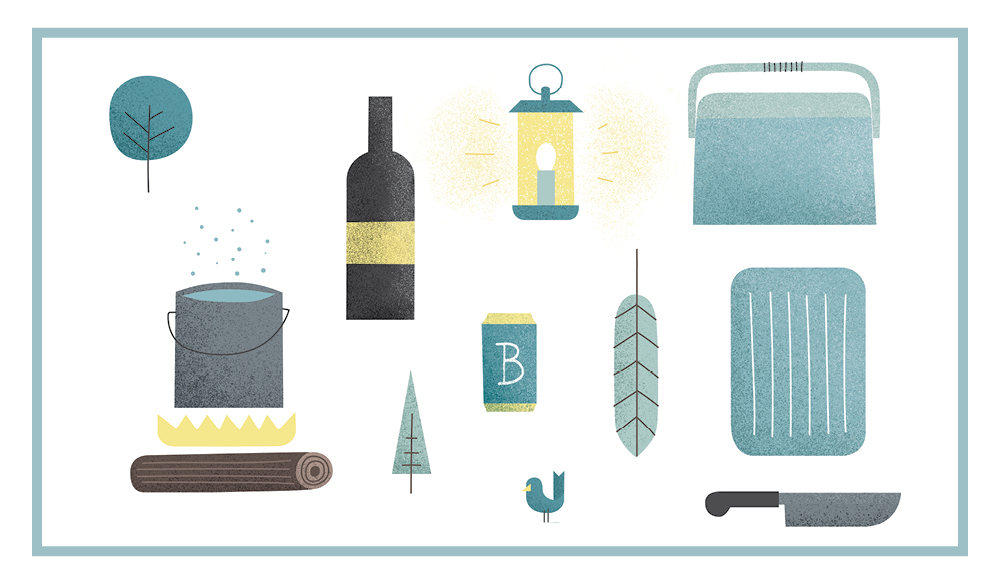10 March 2023
![]() 5 mins Read
5 mins Read

I have never understood why camping is synonymous with bad food.Growing up, my favourite meal was the one my family always ate on the first night of our annual camping trip. A few days before we set off, Mum would prepare the smore.
Not s’more, the North American marshmallow dessert, but the Sri Lankan slow-cooked beef variety, which is equally at home around a campfire. A local take on the European beef pot roast, this pickled and curried hunk of meat is perfect for taking on long trips. The marinade acts as a preservative, and the dish improves with a few days’ rest.
After setting up our tent we would warm the smore, the smell of spices wafting over the other campers. The ubiquitous campground kids on BMX bikes would turn up their noses at its pungency while our mouths watered in anticipation of the fall-apart meat, of mopping up that gravy with fresh bread bought from a small town bakery. Needless to say, no one eats trail mix for dinner on my watch.
Holidays usually revolve around eating good food, and camping doesn’t have to be an exception. I like to approach a camping meal like a MasterChef mystery box challenge, but instead of a ticking clock and George Calombaris breathing down your neck, there’s a quickly setting sun.
Necessity forces creativity; new flavours come together simply because they’re swimming in the bottom of your esky. And the break from a kitchen full of gadgets is a reminder of just how little you need to cook a great dinner. Here are my tips for being a better camp cook.
You don’t need a whole lot of equipment, but if you’re camping with a car then an esky, a portable gas cooker, a saucepan, a frying pan, a sharp knife, a wooden spoon, a chopping board and a can opener are a good place to start. A steamer basket that doubles as a strainer is really useful, and a stovetop coffee pot is a wonderful luxury. Ziplock bags are also incredibly handy for bringing small amounts of ingredients, and storing leftovers.
Olive oil, salt and pepper, fresh garlic and ginger, dried chilli flakes, soy sauce, balsamic vinegar and a small selection of dried spices are my essentials. Beyond that, consider what you like to cook and pack ingredients that can be used in multiple ways, across cuisines, and are hardy – carrots, for instance. Space is usually at a premium, so think smart – buy a fresh chilli, rather than carrying a bottle of chilli sauce. Wraps can be eaten for lunch, used as tortillas, to substitute naan and mop up curry sauce, or used as pita for Middle Eastern and Mediterranean dishes.
Every culture has its own camping foods, so if you’re stuck for inspiration, look beyond your own backyard. Korean campers take over public barbecues to grill meats they then dip in sauces and wrap in lettuce leaves with kimchi. Middle Eastern families will often arrive with a container filled with marinated meat to cook over coals and eat with salad and flatbreads. Taiwanese friends take sticky rice parcels wrapped in lotus leaves on hikes, and we have Americans to thank for ‘cooler corn’ – cobs of corn cooked in an esky by pouring boiling water over the top, and closing the lid for half an hour.
Sauces, stews or curries made ahead of time and frozen in ziplock bags can double as ice bricks, and make excellent reheats. If that all sounds too ‘soccer mum’ for your liking, a simple curry paste or a pesto, a spice mix or a pickle made at home can have multiple uses and will make light work of impressive camping meals.
A salami and a large wedge of hard cheese such as parmesan are indispensable. Both keep well, and can be eaten as a snack, sliced on sandwiches, or added to pastas, sauces or any dish that needs a savoury boost. The salami can also be fried and rendered for its fat.
With limited burners at your disposal, one-pot dishes will often form the bulk of your camping repertoire – a pot of spicy mussels, for instance, is no harder to make indoors or out. Pasta is another camping classic, but getting it al dente can be hard on a camping stove. Opt for short pastas such as penne that are easier to cook in a smaller saucepan of water.
The secret to good, simple food, whether camping or otherwise, is to use good produce. Find the regional speciality, and eat it. If you’re driving through a wine region, you’re obliged to drink good wine from a tin mug and eat cheese for dinner. Buy roadside fruit for breakfast, or learn how to shuck fresh oysters.
Cooking with a drink in hand is a crucial element of camping, and a tinnie will prove your best friend: add a splash of beer whenever you’d normally use wine in a dish, such as deglazing a pan for a stir-fry, or in a pasta sauce. And there’s no reason you should feel limited to a tinnie: bring the makings of a negroni cocktail or a bottle of whisky if you really want to up the ante.
Love camping with the family? Check out Top 6 ‘camping with children’ commandments
LEAVE YOUR COMMENT